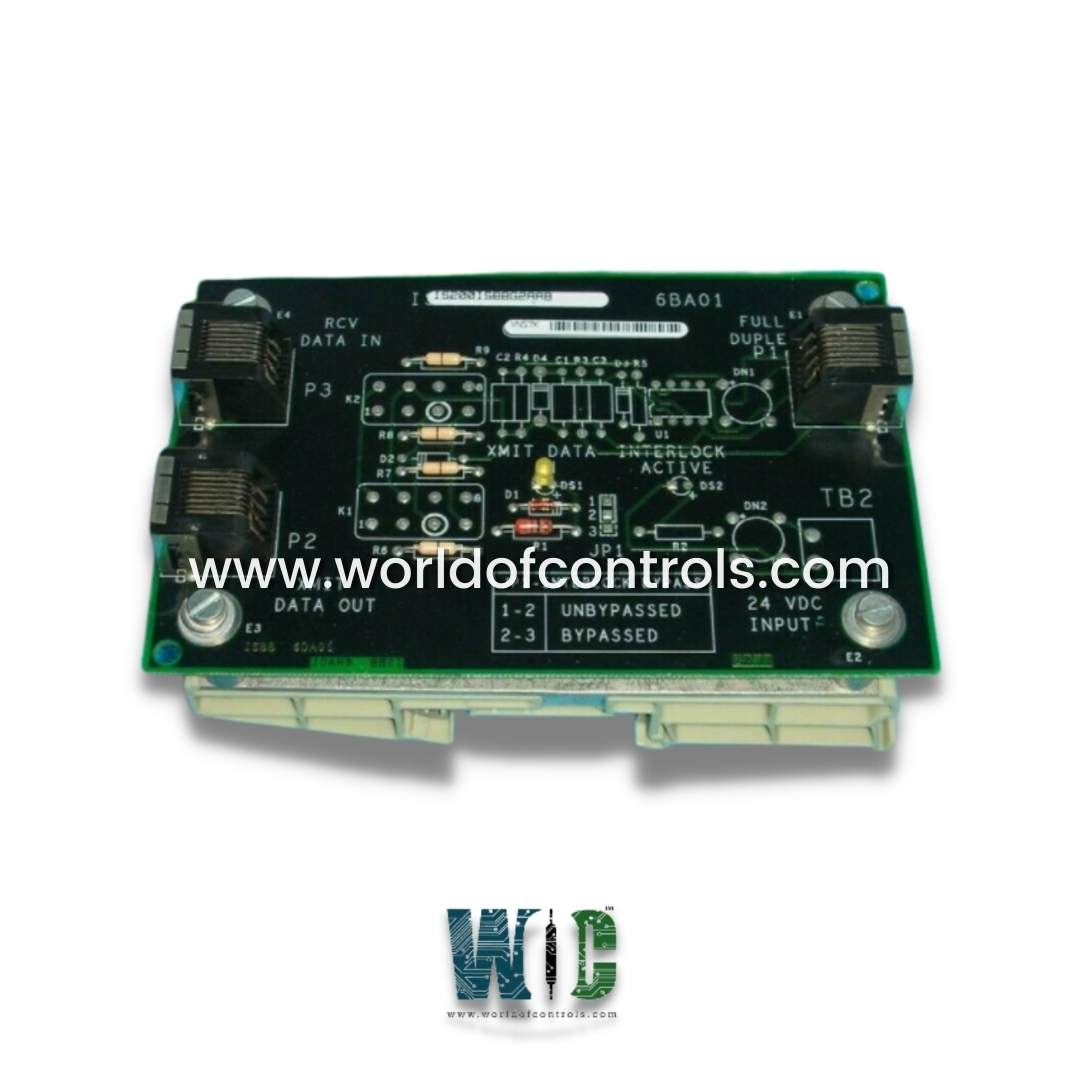
World Of Controls understands the criticality of your requirement and works towards reducing the lead time as much as possible.
IS200ISBBG2A - InSync Bus Bypass Board is available in stock which ships the same day.
IS200ISBBG2A - InSync Bus Bypass Board comes in UNUSED as well as REBUILT condition.
To avail our best deals for IS200ISBBG2A - InSync Bus Bypass Board, contact us and we will get back to you within 24 hours.
SPECIFICATIONS:
Part Number: IS200ISBBG2A
Manufacturer: General Electric
Series: EX2100
Function: InSync Bus Bypass Board
Power Consumption: < 2W
Input Voltage Range: 5V to 24V DC
Availability: In Stock
Mounting: DIN-Rail
Operating Temperature: -20°C to +70°C
Voltage Rating: 24 VDC
Product type: PCB
Weight: 0.31 Pounds
Country of Manufacture: United States (USA)
FUNCTIONAL DESCRIPTION:
IS200ISBBG2A is an InSync Bus Bypass Board manufactured and designed by General Electric as part of the EX2100 Series used in GE Excitation Control Systems. It is typically installed on DIN rails. Screws into six factory-made drill holes secure these to the underside of the board. A conductive material surrounds the holes. This board includes four connectors for communicating with other system components, including a two-position terminal strip and three right-angled plug connectors. All connectors are located along the edges of the short board. The board features four connectors that are used for communication with other system components. These include a two-position terminal strip and three right-angled plug connectors. All of the connectors are located along the edges of the short board, making them easily accessible for installation and maintenance purposes. It serves as a 24 VDC InSync Bus Bypass board and is typically mounted on DIN rails. The board includes various connectors for communication with other system components and features LED indicators for visual feedback. The jumper settings, two-position terminal strip, and female plugs offer configuration flexibility and convenient power and signal connections.
The board functions as a passive or semi-active interposer, enabling fail-safe continuity of the bus even during the removal of a field I/O module, controller, or protection relay for service or replacement. In turbine excitation environments, where control loops are tightly coupled and subject to electrical noise and transients, the InSync Bus Bypass Board enhances system resilience by providing galvanic isolation (via opto-isolators or isolation transformers) between segments of the control bus. It also supports termination resistor management — critical for preventing reflection in long or branched networks — and features visual status indicators for RX/TX activity, power presence, and active bypass mode.
INSTALLATION:
The board is positioned inline with the communication path between the digital excitation controller (e.g., GE EX2100e or ABB UNITROL) and the associated I/O or interface modules. The upstream connection is made from the excitation controller's communication output (TXD/RXD), while the downstream is routed toward the field terminal boards or turbine protection relays.
If the excitation system includes a redundant controller setup (e.g., dual AVR paths), each path may require a dedicated bypass board. The board’s bus IN and OUT terminals must match the impedance and protocol specifications of the excitation communication network. For example, in an RS-485-based excitation system, the twisted-pair shielded cables must be properly terminated using on-board jumper-configurable 120Ω resistors.
OPERATION:
It routes serial or digital control signals from the voltage regulator to downstream I/O modules and feedback circuits. If the connected module is functioning normally, the bypass circuit remains open, allowing uninterrupted communication. The RX/TX LEDs indicate signal presence, confirming live bus communication between the excitation controller and generator auxiliary systems.
In the event of a fault or during preventive maintenance (such as firmware upgrades to AVR modules or I/O diagnostics), the board can be switched to bypass mode — either manually (via jumper/switch) or automatically (if the module is removed). This initiates a hardwired pass-through between the IN and OUT bus lines, effectively isolating the faulty module while maintaining network continuity. In turbine excitation systems, this ensures that critical functions such as voltage feedback, rotor field current sensing, and overexcitation protection remain operational even when one component is taken offline.
In systems with digital turbine control (DTC) integration or embedded PSS, the board also helps isolate specific logic or PID modules without disabling the AVR control loop. For excitation systems requiring real-time fault isolation (e.g., those governed by IEEE 421.5 or NERC PRC-019 compliance), the bypass board reduces downtime and supports continuous compliance monitoring.
WOC has the largest stock of GE Excitation Turbine Control System Replacement Parts. We can also repair your faulty boards and supply unused and rebuilt boards backed up with a warranty. Our team of experts is available around the clock to support your OEM needs. Our team of experts at WOC is happy to assist you with any of your automation requirements. For pricing and availability on any parts and repairs, kindly get in touch with our team by phone or email.
What is the primary function of the InSync Bus Bypass Board in an excitation turbine control system?
The InSync Bus Bypass Board allows for the isolation, hot-swapping, or removal of communication modules (such as AVR interface boards or I/O cards) without interrupting the integrity of the communication bus. It ensures uninterrupted signal flow between the excitation controller (e.g., GE EX2100e or ABB UNITROL) and field equipment like sensors, protection relays, or auxiliary PLCs.
Is the board compatible with all excitation systems?
The board is protocol-agnostic and supports common bus types used in excitation systems, such as RS-485, CAN, Profibus DP, and proprietary serial interfaces. However, electrical compatibility (voltage levels, termination requirements, and signal type) must be verified before installation.
Does the InSync Bus Bypass Board support hot-swapping?
Yes, it is designed to support hot-swapping of modules in live systems, provided the surrounding architecture allows it. When a module is removed, the board activates its internal bypass mechanism to maintain bus continuity, which is essential in real-time excitation loops.